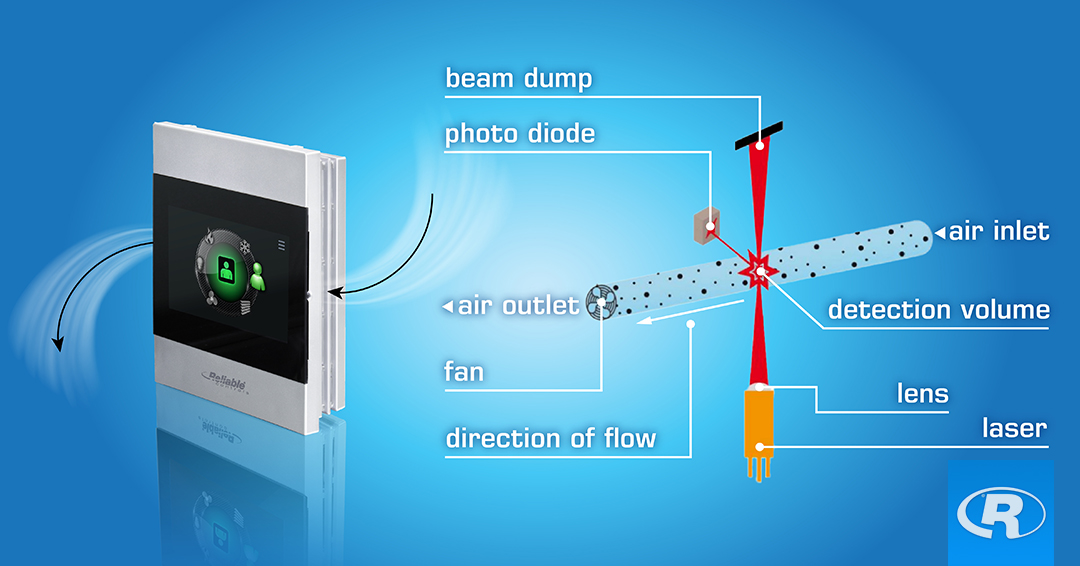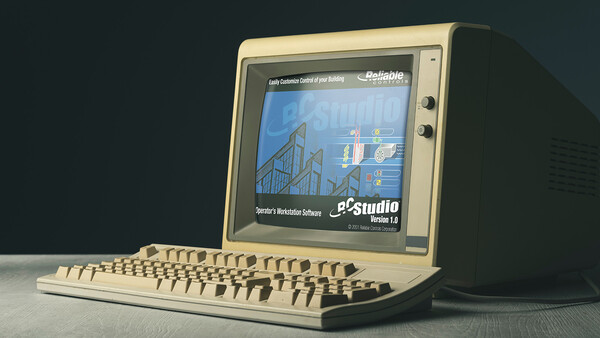President’s message: Transparency in the race to net zero
Reliable Controls president Tom Zaban explores how we can help you foster transparency in the race to net zero.





Particulate matter—the "PM" in PM2.5—is comprised of tiny particles significantly smaller than a grain of fine beach sand suspended in the atmosphere. The numeric "2.5" in PM2.5 refers to these particles' size in micrometers, or µm. Put simply—they're freakin' tiny!
Airborne particulate matter isn't a single pollutant but a complex combination of solids and aerosols. Particles vary in size and shape; those with a diameter of 10 microns or less (PM10) are inhaled into the lungs and can cause adverse health effects. PM2.5 particles (2.5 microns or less in diameter) are even smaller—about 30 times smaller than the width of a human hair.
Monitoring particulate matter levels in your building is vital for several reasons. First, the minuscule size enables particulate matter to infiltrate indoors, bypassing some conventional filtration systems. They are easily inhaled and can penetrate deep into the respiratory tract and cause a range of health problems, from increased hospital admissions for heart and lung issues to acute and chronic bronchitis and worsening asthma attacks.
Further, elevated indoor PM2.5 levels hint at poor indoor air quality (IAQ), which can harm occupants' productivity and comfort. Monitoring indoor PM2.5 levels is essential for health and an optimal working or living environment.
A particulate matter sensor measures the concentration of PM2.5 or PM10 in the air. Most use the principle of light scattering: a light source (commonly an LED) shines on an air sample that contains particulate matter. The particles in the air reflect or scatter this light in various directions, which a photodetector then records. The intensity of this scatter directly correlates to the number of particles, enabling the sensor to calculate the PM2.5 concentration.
The advanced PM2.5 sensors available in Reliable Controls products use laser technology for enhanced precision and have built-in fans to pull in a precise air volume, ensuring an accurate representation of the ambient air (Figure 1). These measurements are provided in micrograms per cubic meter (µg/m³), a standardized unit for air pollution, allowing for easy comparison with international air quality guidelines and standards. These sensors are available for sale today with the MACH-ProView™ series of controllers and in the SMART-Sensor™ and SMART-Sensor EPD wall sensor products.

Figure 1: Measurement principle of particulate matter sensors.
Sensors are a crucial component of any building automation system, collecting data inputs used to control ventilation, air filtration, and other equipment. You can depend on technologies from Reliable Controls to monitor the IAQ in your facilities. Whether you need to measure particulate matter, volatile organic compounds, carbon dioxide, relative humidity, or temperature, Reliable Controls has sensor options to suit a variety of needs.
Learn more about Reliable Controls and IAQ.

Reliable Controls president Tom Zaban explores how we can help you foster transparency in the race to net zero.

Reliable Controls president Tom Zaban reflects on 30 years of the BACnet protocol.

Celebrating nearly 25 years of RC-Studio, the backbone of our suite of building automation tools.

Learn how Reliable Controls promotes a circular economy, starting with design choices.

Learn about encouraging outcomes of the UN Climate Change Conference and how building automation plays a critical role in achieving global decarbonization goals.

What does a Zamboni have in common with an arena's ventilation system?

When every second matters, players should be set up for success. The building automation system can do just that.